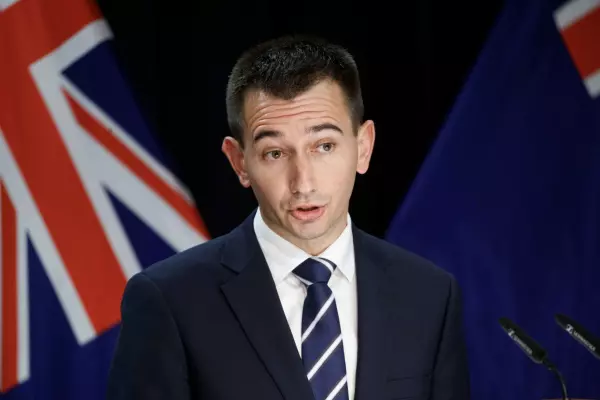When we launched the Business of Health series, we expected it might be tricky to access financial information and other data from the private sector. Businesses such as GPs have no obligation to share their books publicly unless they are listed on the New Zealand stock exchange or are foreign-owned and of a certain size.
But we expected the government would share information on how its enormous health budget – in 2022-23, it was roughly $30 billion – is being spent and what value we are getting out of it.
This question, central to the project, is of clear public interest – hence the NZ on Air funding, under the Public Interest Journalism Fund, we received to back it.
Between August and November, we sent a flurry of requests under the Official Information Act (OIA) to the Ministry of Health, former District Health Boards (DHBs), and Te Whatu Ora. Most of our requests were redirected to Te Whatu Ora, which replaced the 20 DHBs and took over several functions from the ministry in July 2022 following major health reforms.
The OIA came into effect in 1982 to help make information public unless there was a good reason for it not to be. It says a response to OIA requests must be sent “as soon as reasonably practicable”, and no later than 20 working days.
Delays and failure to respond
Out of a total of 18 requests sent to Te Whatu Ora for the project, three were answered within the 20-working-day deadline. We received a full or partial response to nine requests after delays of up to 16 weeks. We are still waiting for a response to five of our requests, more than three months after we sent them. We have had no explanation for why these requests have not been answered. Parts of three requests, which were answered after a delay, are also overdue by several weeks. One request was declined.
We were not the only ones struggling to get OIA responses from the health agency. The Office of the Ombudsman said it had received 86 OIA complaints regarding Te Whatu Ora since its inception on July 1, 2022.
Interim head of government services Sasha Wood said that the ministerial services team had "worked tirelessly to respond to a huge volume" of OIA requests since the establishment of Te Whatu Ora, while also recruiting to fully resource the team.
It received more than 1,900 OIA requests in the first six months of the agency's existence, and its compliance with the act "in regard to meeting response times" was 89%.
Responses given after extensions, and information released with a delay after a decision had been made, were counted as "compliant".
Wood added that many of BusinessDesk's requests sought data from districts across the country, which is not held centrally – "a significant and complicated exercise" taking "considerable time and effort".
Problems with the OIA are not new, nor are they limited to health authorities. Earlier this month, experts called for sanctions to be introduced for those failing to comply with OIA laws, following the Stuart Nash saga.
Nash was dismissed last month from cabinet after Stuff published details of a 2021 email he sent to campaign donors detailing internal Cabinet discussions.
Newsroom then revealed that one of its contributors had requested written correspondence between Nash and his donors at the time and was told there was nothing falling within the scope of his request.
The issue is now under investigation by the Ombudsman.
Chief Ombudsman Peter Boshier last year published a report following a probe into 12 core government agencies, including the Ministry of Health. It highlighted multiple instances of the OIA legislation being broken, with spin doctors and ministerial offices bending the rules to suit their purposes.
An army of comms people?
So, why is it so hard to obtain information? To find out, we asked Te Whatu Ora under the OIA to provide data on its comms budget, staffing numbers and pay, and its use of PR consultants.
We sent the request on Nov 23, which meant it was due on Dec 20. Te Whatu Ora extended the request to Jan 31. Then it said the response would be sent before March 3, which then became March 31.
We are still waiting for it.
To better understand Te Whatu Ora's comms strategy, we also asked for copies of any communications sent since July 2022 to its communications staff about their handling of media enquiries, and about the handling of OIA requests from the media.
The request was sent on Dec 1, with a response due on Jan 19 under the Act. Te Whatu Ora extended the request to Feb 17.
More than a month later, we are still waiting for a response.
Last month, health minister Ayesha Verrall revealed Te Whatu Ora had 173 communications staff (equating to 163 full-time equivalents) as well as at least 26 contractors.
Former Te Whatu Ora chair Rob Campbell, in an opinion piece published after he was sacked from the agency, said the government hired rafts of communications people to sell its messaging, “often poorly as in Te Whatu Ora, where there are over 200 such people and where despite that overload PR firms are often called in to sell better".
For context, the health agency employs a total of about 80,000 people, which it plans to restructure.
Hospital suppliers
We struggled to get information about top hospital suppliers. Te Whatu Ora took weeks to provide a list of its biggest contractors.
When we received it, we tried to dig deeper into two global firms supplying services to hospitals.
One was the Compass Group NZ, wholly owned by a British-based multinational. It supplies thousands of meals a day to NZ's hospitalised, elderly and vulnerable.
The global giant is the largest food supplier in the health sector in NZ, supplying food to 12 Te Whatu Ora districts through multimillion-dollar long-term contracts.
We found that the company had healthy margins and profit growth despite the pandemic, cost increases and complaints about the quality of the meals it served in hospitals here.
The other was ISS Facility Services Australia NZ, a subsidiary of a global facility management services company with more than 350,000 employees in 30 countries.
Its NZ arm is a leading provider of cleaning services in our health sector – running multimillion-dollar contracts with four Te Whatu Ora districts.
Health represents roughly two-thirds of the company’s revenue in NZ.
Through an initial OIA sent to several former DHBs, we obtained a list of some of the contracts with those firms, including their price.
To paint a comprehensive picture, we asked Te Whatu Ora in October for a list of all districts with a contract with Compass and ISS, and the price of each contract.
We never received a full response.
To find out more about how these firms were performing, we asked Te Whatu Ora on Nov 1 to provide the number of complaints its districts had received about services provided by Compass and ISS since 2018.
The response was initially due on Nov 29. Te Whatu Ora extended the deadline to Dec 20.
Then it told us that a decision had been made but it would take some time to prepare the information for release. We were told on Dec 20 that a response would come “as soon as is reasonably practicable”.
Three months later, we are still waiting for it.
We found that one DHB saved millions of dollars when it took its hospital catering in-house after its contract with Compass ended.
In October, we asked Te Whatu Ora which other districts did catering in-house and how these food services were run, to find out whether they were also saving money compared with other districts that had contracted the catering out to Compass.
We never received a response.
We asked Te Whatu Ora in early November to give us more details on how cost savings had been achieved by signing deals with Compass, and what the annual price had been for the agreements since 2016.
We never received a response.
Covid-19 funding for general practice
A big part of our investigation looked into general practitioners.
About 80% of this country's 1000 general practices are private businesses, receiving more than $1 billion in public funding each year – about 5% of the total operating health funding.
In our interview with former health minister Andrew Little at the start of the project, he said primary care had received $490m in extra funding in 2021-22 to cover covid-19 testing, vaccination and care in the community.
He questioned how the extra money had been spent, sharing that the only care he had received from his GP when he had covid was two texts.
His comments set fire to an already fractious relationship between the government and GPs, who have been crying out for more funding for years.
As part of our investigation looking into whether GPs were underfunded, we asked Te Whatu Ora, under the OIA, to provide us with details of the extra covid-19 funding given to GPs since the start of the pandemic.
Following up on Little’s comments, we asked how the use of the funds by GPs was being monitored by the government and for any reports on how the funds had been used.
We sent the request on Nov 23, and a response was due before Dec 20.
Te Whatu Ora extended the deadline to Jan 31. It sent a partial response on March 2, more than a month after we had published our series on the topic.
The response only provided the amounts given to GPs each year since 2020 but did not answer questions as to how the use of the funds had been monitored.
It did not say when the question would be answered.
Capitation funding
Aside from covid money, we wanted to find out how GPs were being funded.
The Ministry of Health’s website says that the "vision for primary care is being reset to align with the direction set by the NZ Health Plan", including a review of capitation funding, and "of the way primary care is structured and funded, which may alter some of the fees GPs charge".
We asked the ministry to provide more details on this review, and what proportion of overall health spending went to GPs.
We expected this to be a simple media request not needing to go through the OIA process. But a ministry spokesperson told us this would need to be processed by Te Whatu Ora under the OIA.
The response was due on Nov 25. The deadline was delayed to Nov 17, then to Dec 20.
Then we were told a decision had been made but the agency needed more time and it would be sent by Jan 27.
Mental health contractors
We wanted to investigate the mental health contractors getting a big share of the $1.9b wellbeing budget announced in 2019.
To kick this off, we requested under the OIA that Te Whatu Ora send us a list of its 20 biggest mental health services suppliers on Oct 25.
The response was due on Nov 23. Te Whatu Ora extended the request to Dec 17.
On Dec 16, it said a decision had been made but it would take some time to send a response, which should come before Jan 27.
We finally received the list in the last week of February, just a week before funding for the project ran out, which meant we did not have time to follow up on the list and report on this important issue.














